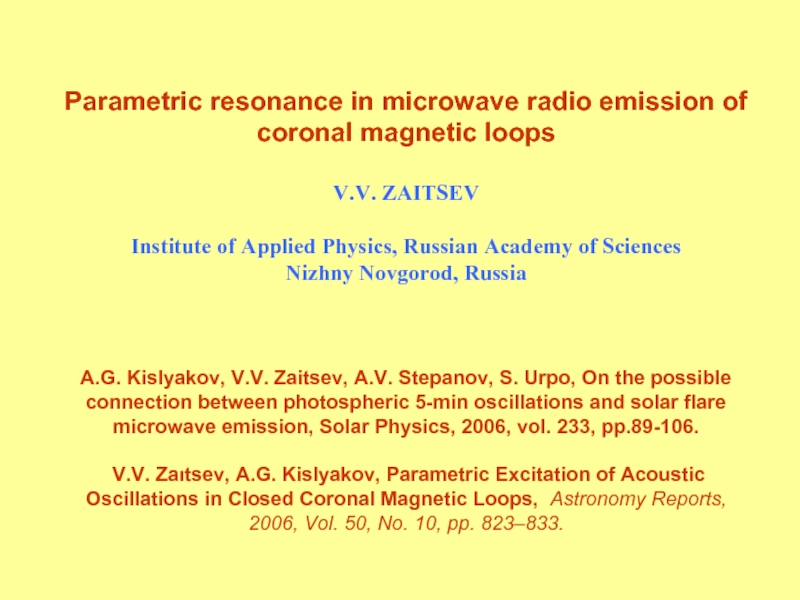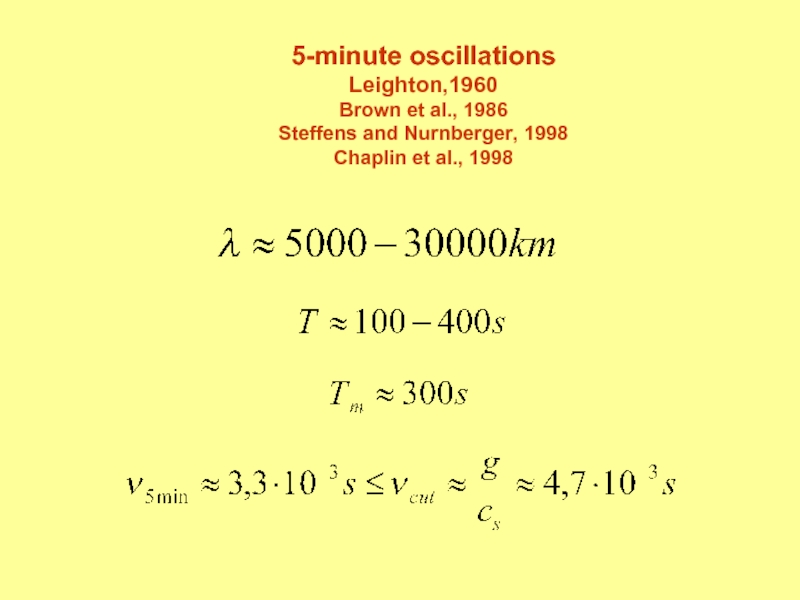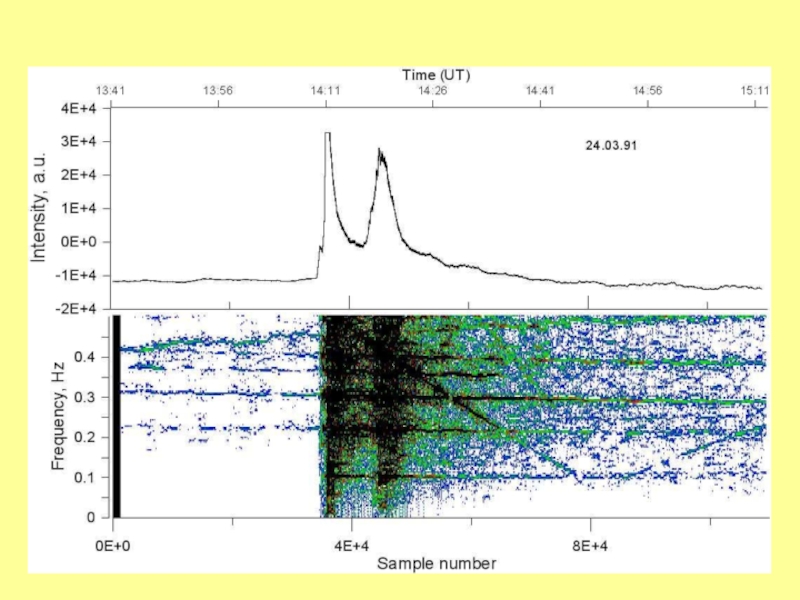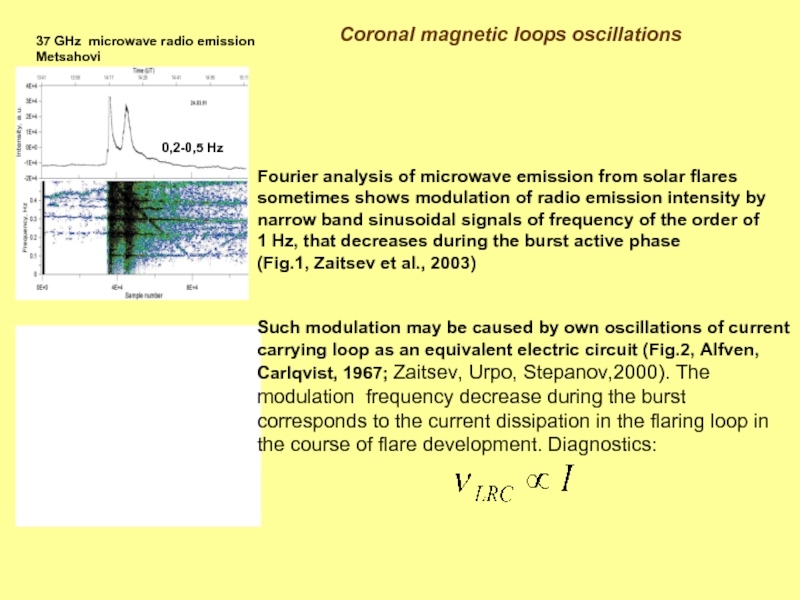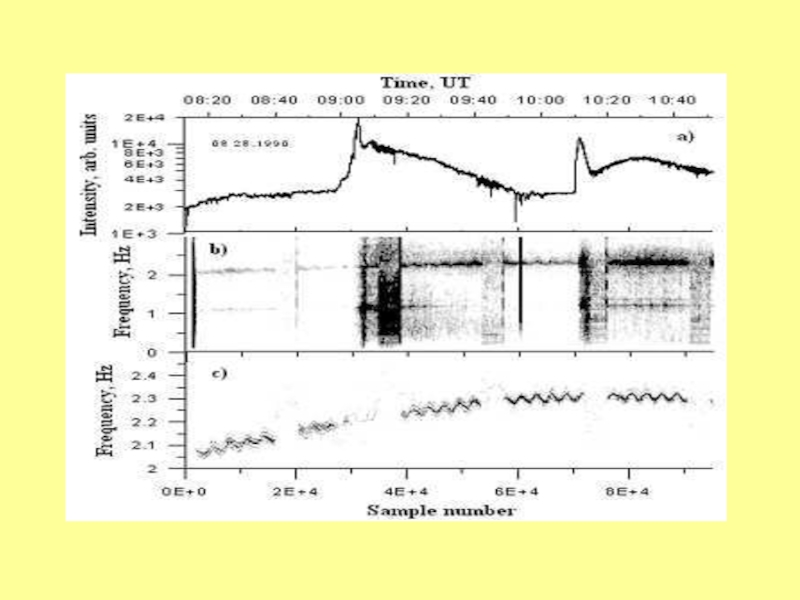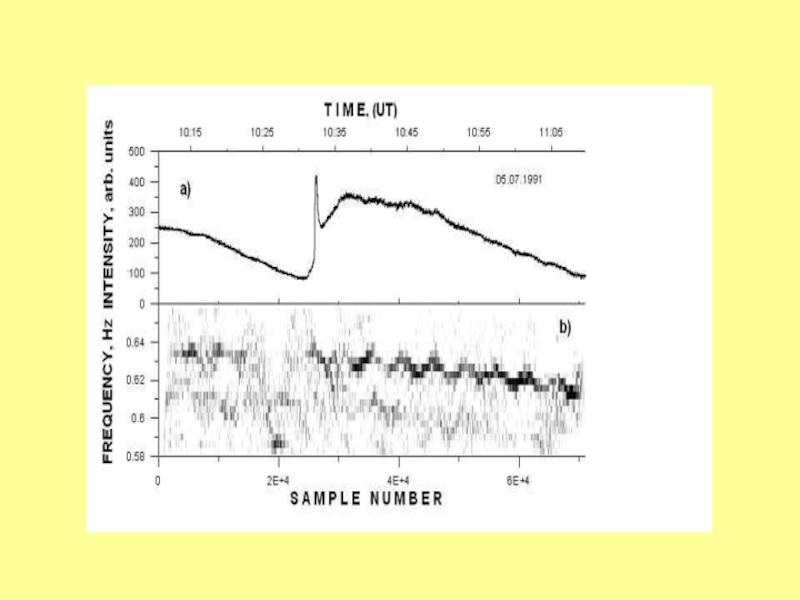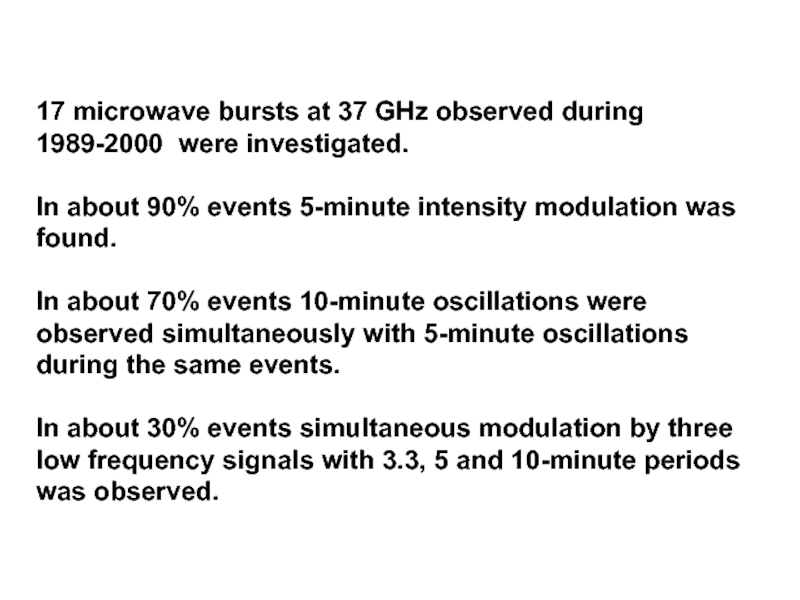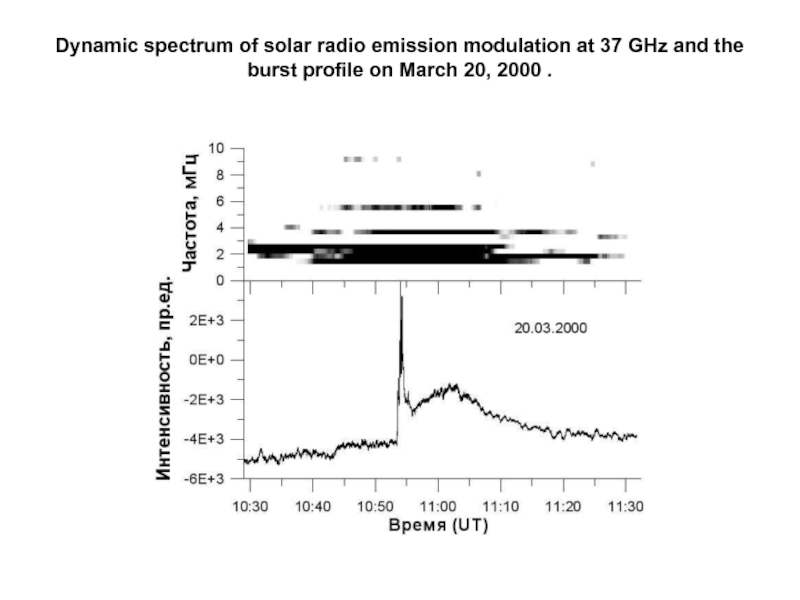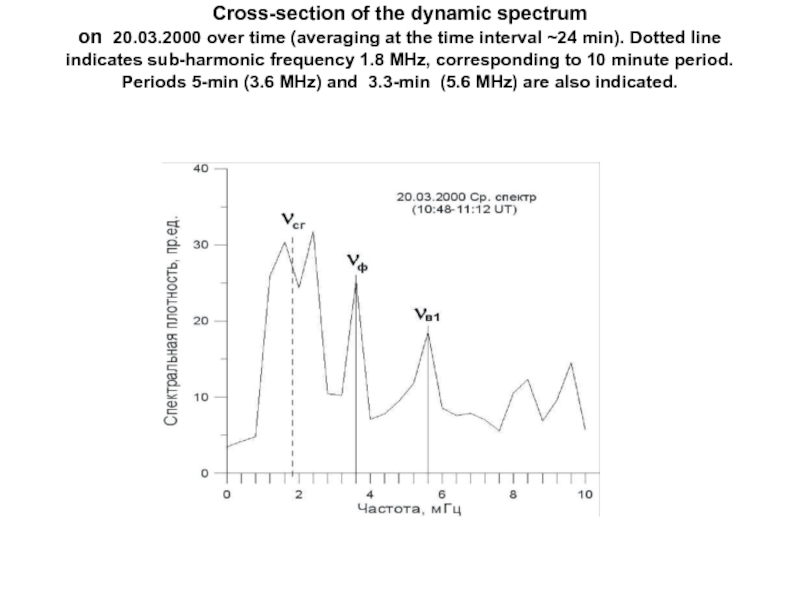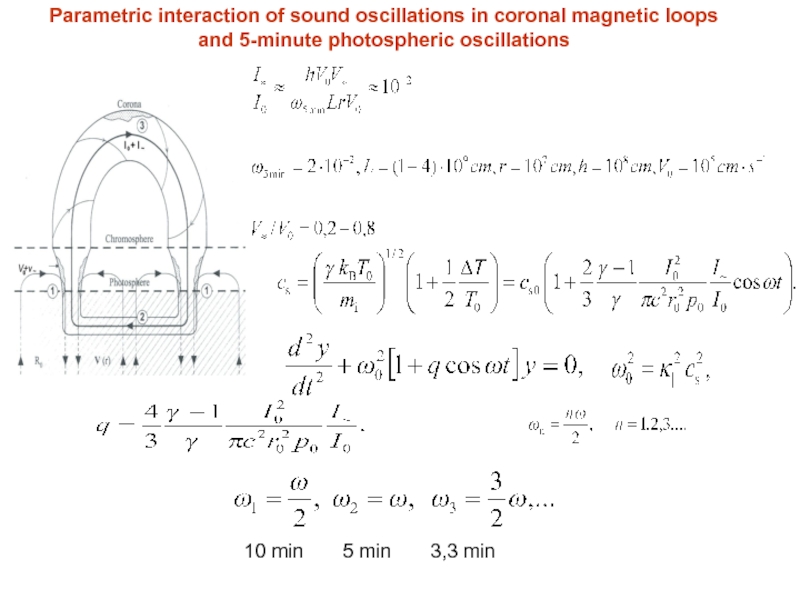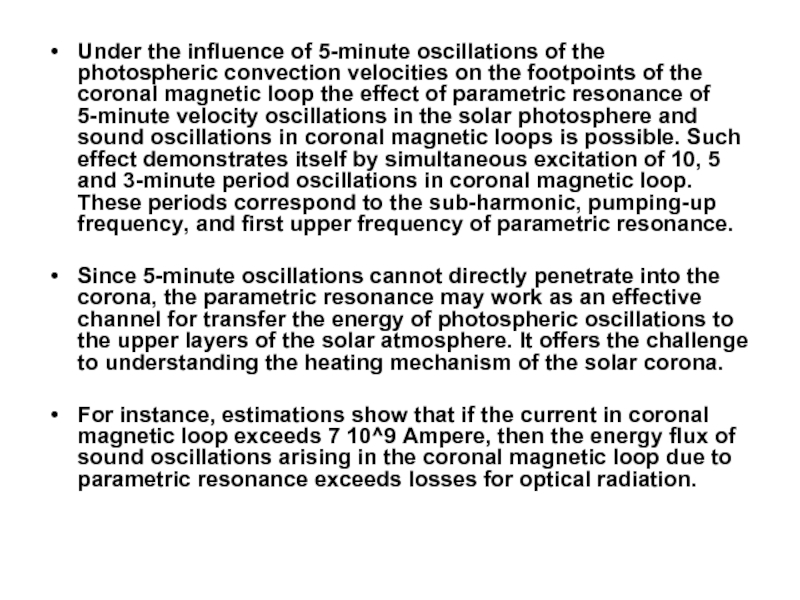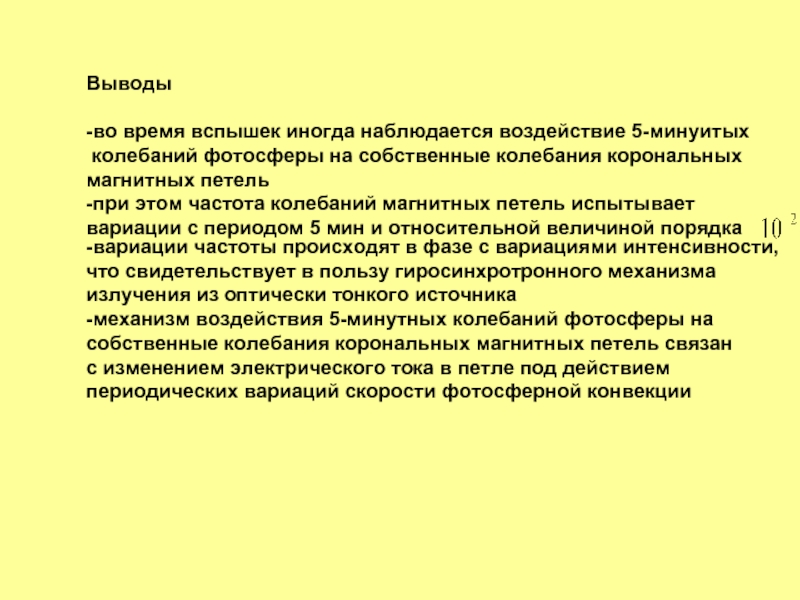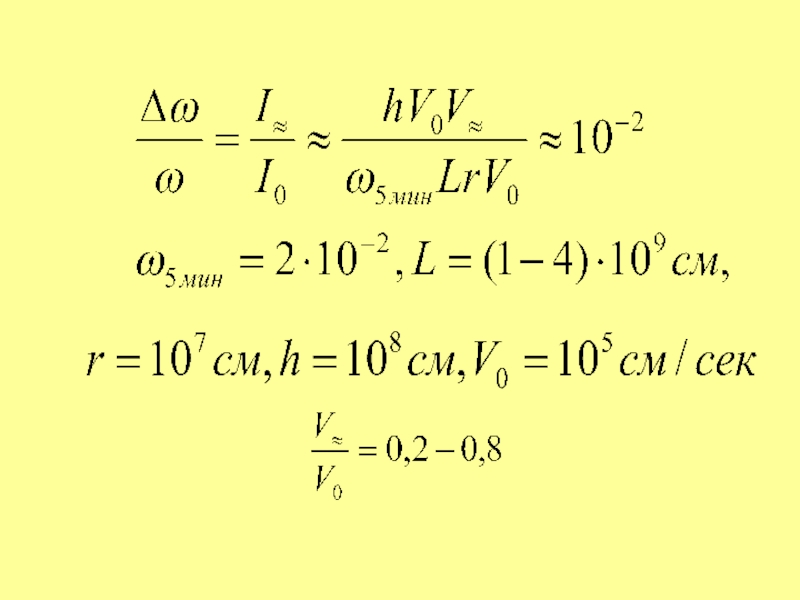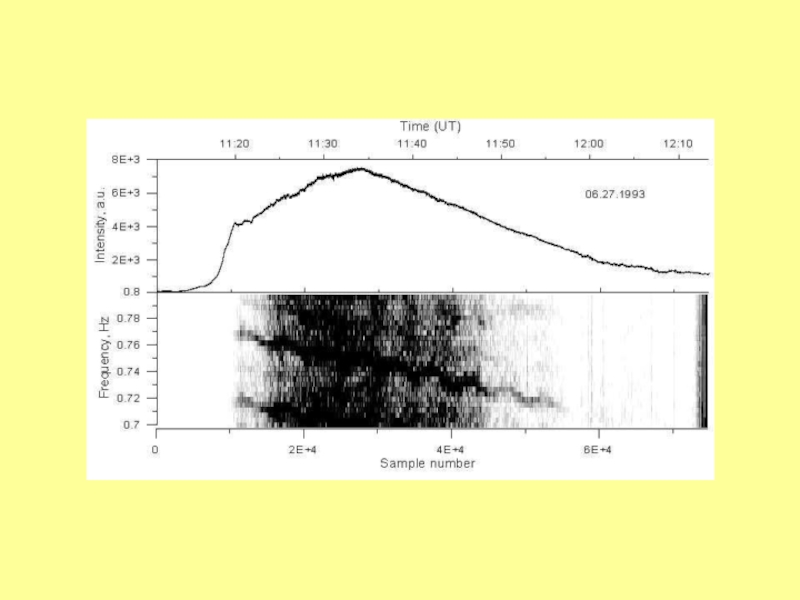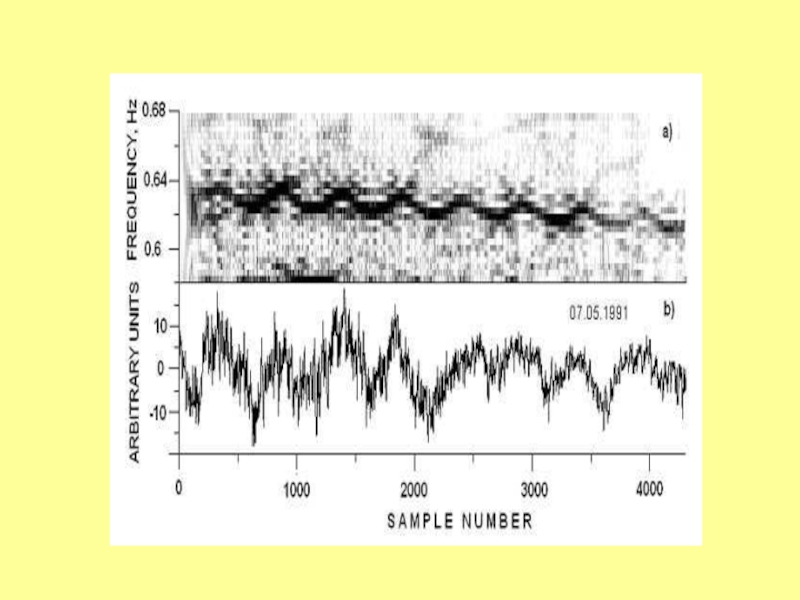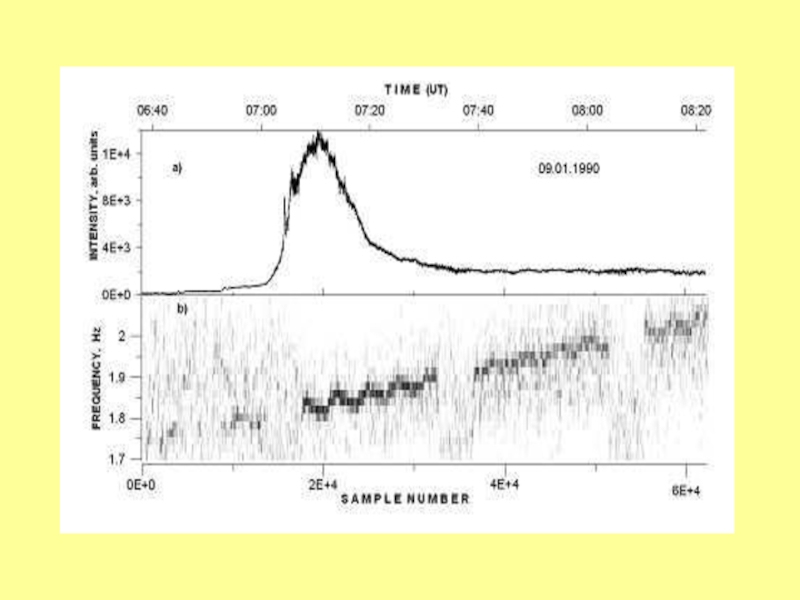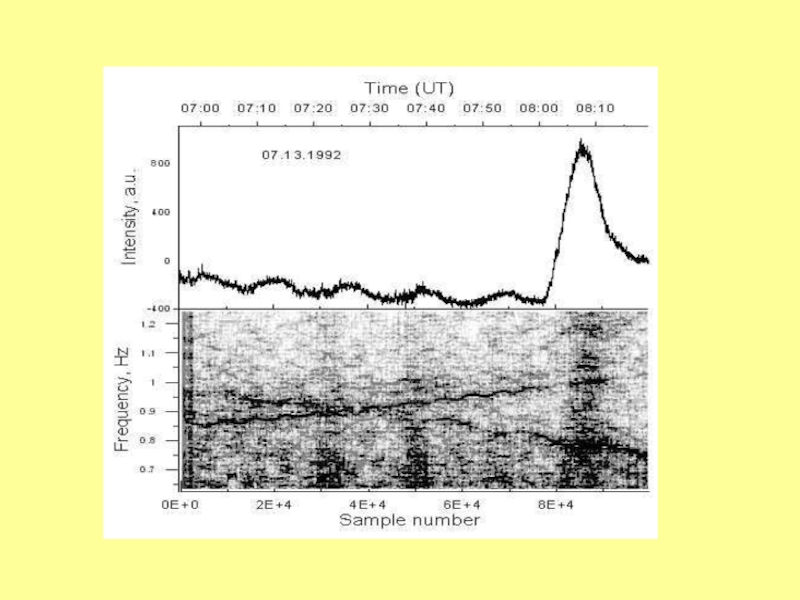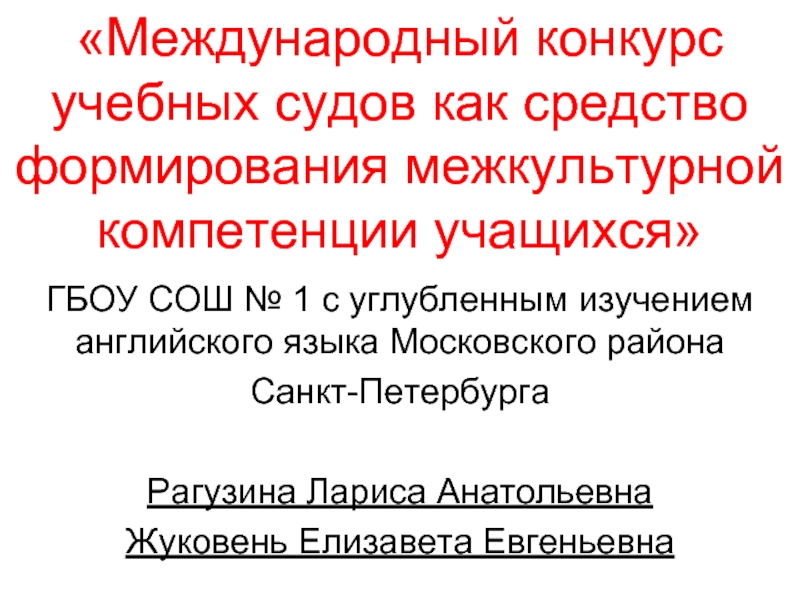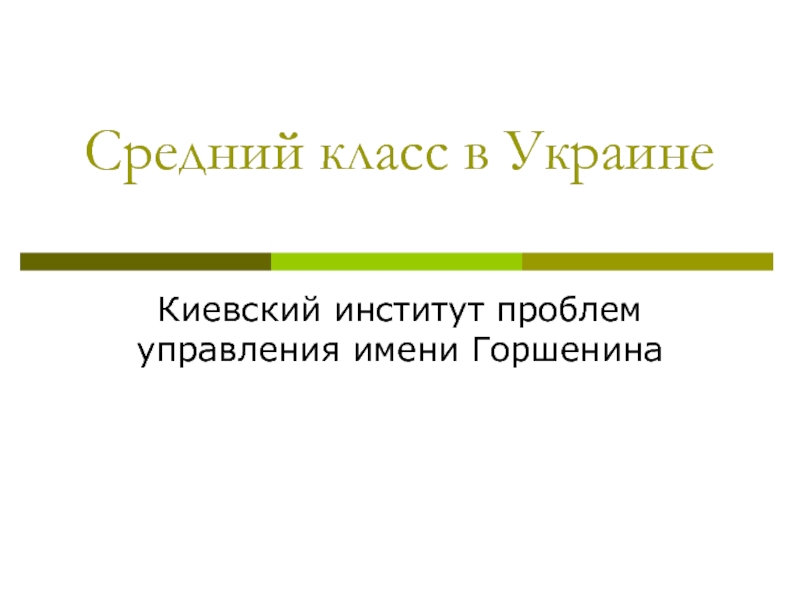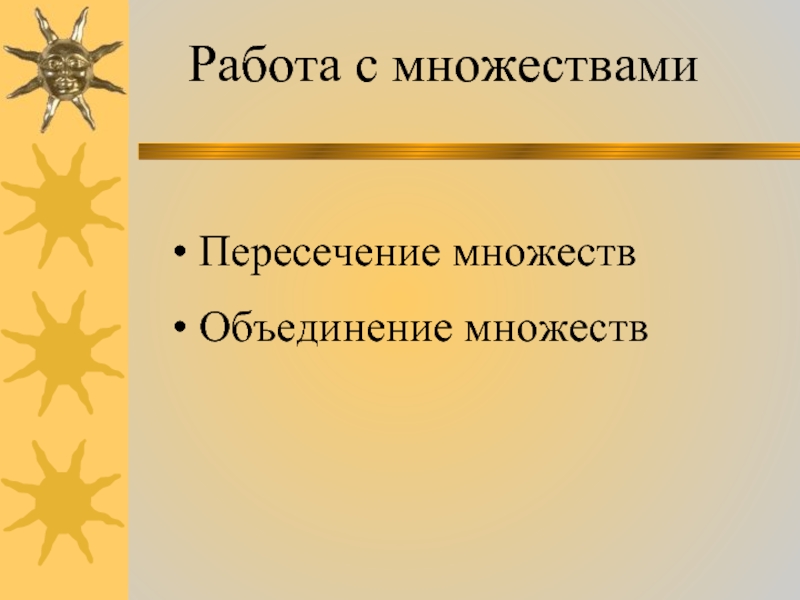- Главная
- Разное
- Дизайн
- Бизнес и предпринимательство
- Аналитика
- Образование
- Развлечения
- Красота и здоровье
- Финансы
- Государство
- Путешествия
- Спорт
- Недвижимость
- Армия
- Графика
- Культурология
- Еда и кулинария
- Лингвистика
- Английский язык
- Астрономия
- Алгебра
- Биология
- География
- Детские презентации
- Информатика
- История
- Литература
- Маркетинг
- Математика
- Медицина
- Менеджмент
- Музыка
- МХК
- Немецкий язык
- ОБЖ
- Обществознание
- Окружающий мир
- Педагогика
- Русский язык
- Технология
- Физика
- Философия
- Химия
- Шаблоны, картинки для презентаций
- Экология
- Экономика
- Юриспруденция
Parametric resonance in microwave radio emission of coronal magnetic loops V.V. ZAITSEV Institute of Applied Physics, Russian Academy of Sciences Nizhny Novgorod, Russia A.G. Kislyakov, V.V. Zaitsev, A.V. Stepanov, S. Urpo, On the possible connection презентация
Содержание
- 1. Parametric resonance in microwave radio emission of coronal magnetic loops V.V. ZAITSEV Institute of Applied Physics, Russian Academy of Sciences Nizhny Novgorod, Russia A.G. Kislyakov, V.V. Zaitsev, A.V. Stepanov, S. Urpo, On the possible connection
- 2. 5-minute oscillations Leighton,1960 Brown et al., 1986
- 4. Coronal magnetic loops oscillations Fourier analysis of
- 7. 17 microwave bursts at 37 GHz
- 8. Dynamic spectrum of solar radio
- 9. Cross-section of the dynamic spectrum
- 10. Parametric interaction of sound oscillations in coronal
- 11. Under the influence of 5-minute
- 12. THANK YOU !
- 13. Выводы -во время вспышек иногда наблюдается
- 14. Механизмы взаимодействия 5-мин. осцилляций и собственных колебаний
Слайд 1
Parametric resonance in microwave radio emission of coronal magnetic loops
V.V. ZAITSEV
Institute
Nizhny Novgorod, Russia
A.G. Kislyakov, V.V. Zaitsev, A.V. Stepanov, S. Urpo, On the possible connection between photospheric 5-min oscillations and solar flare microwave emission, Solar Physics, 2006, vol. 233, pp.89-106.
V.V. Zaıtsev, A.G. Kislyakov, Parametric Excitation of Acoustic Oscillations in Closed Coronal Magnetic Loops, Astronomy Reports, 2006, Vol. 50, No. 10, pp. 823–833.
Слайд 25-minute oscillations
Leighton,1960
Brown et al., 1986
Steffens and Nurnberger, 1998
Chaplin et al., 1998
Слайд 4Coronal magnetic loops oscillations
Fourier analysis of microwave emission from solar flares
1 Hz, that decreases during the burst active phase
(Fig.1, Zaitsev et al., 2003)
Such modulation may be caused by own oscillations of current carrying loop as an equivalent electric circuit (Fig.2, Alfven, Carlqvist, 1967; Zaitsev, Urpo, Stepanov,2000). The modulation frequency decrease during the burst corresponds to the current dissipation in the flaring loop in the course of flare development. Diagnostics:
37 GHz microwave radio emission
Metsahovi
0,2-0,5 Hz
Слайд 7
17 microwave bursts at 37 GHz observed during 1989-2000 were investigated.
In
In about 70% events 10-minute oscillations were observed simultaneously with 5-minute oscillations during the same events.
In about 30% events simultaneous modulation by three low frequency signals with 3.3, 5 and 10-minute periods was observed.
Слайд 8 Dynamic spectrum of solar radio emission modulation at 37 GHz and
Слайд 9 Cross-section of the dynamic spectrum on 20.03.2000 over time (averaging at
Слайд 10Parametric interaction of sound oscillations in coronal magnetic loops and 5-minute
10 min 5 min 3,3 min
Слайд 11
Under the influence of 5-minute oscillations of the photospheric convection velocities
Since 5-minute oscillations cannot directly penetrate into the corona, the parametric resonance may work as an effective channel for transfer the energy of photospheric oscillations to the upper layers of the solar atmosphere. It offers the challenge to understanding the heating mechanism of the solar corona.
For instance, estimations show that if the current in coronal magnetic loop exceeds 7 10^9 Ampere, then the energy flux of sound oscillations arising in the coronal magnetic loop due to parametric resonance exceeds losses for optical radiation.
Слайд 13Выводы
-во время вспышек иногда наблюдается воздействие 5-минуитых
колебаний фотосферы на собственные
магнитных петель
-при этом частота колебаний магнитных петель испытывает
вариации с периодом 5 мин и относительной величиной порядка
-вариации частоты происходят в фазе с вариациями интенсивности,
что свидетельствует в пользу гиросинхротронного механизма
излучения из оптически тонкого источника
-механизм воздействия 5-минутных колебаний фотосферы на
собственные колебания корональных магнитных петель связан
с изменением электрического тока в петле под действием
периодических вариаций скорости фотосферной конвекции
Слайд 14Механизмы взаимодействия 5-мин. осцилляций и собственных колебаний петли
-прогрев оснований петли вследствие
-взаимодействие 5-мин. осцилляций с электрическим током, текущим вдоль корональной магнитной петли
